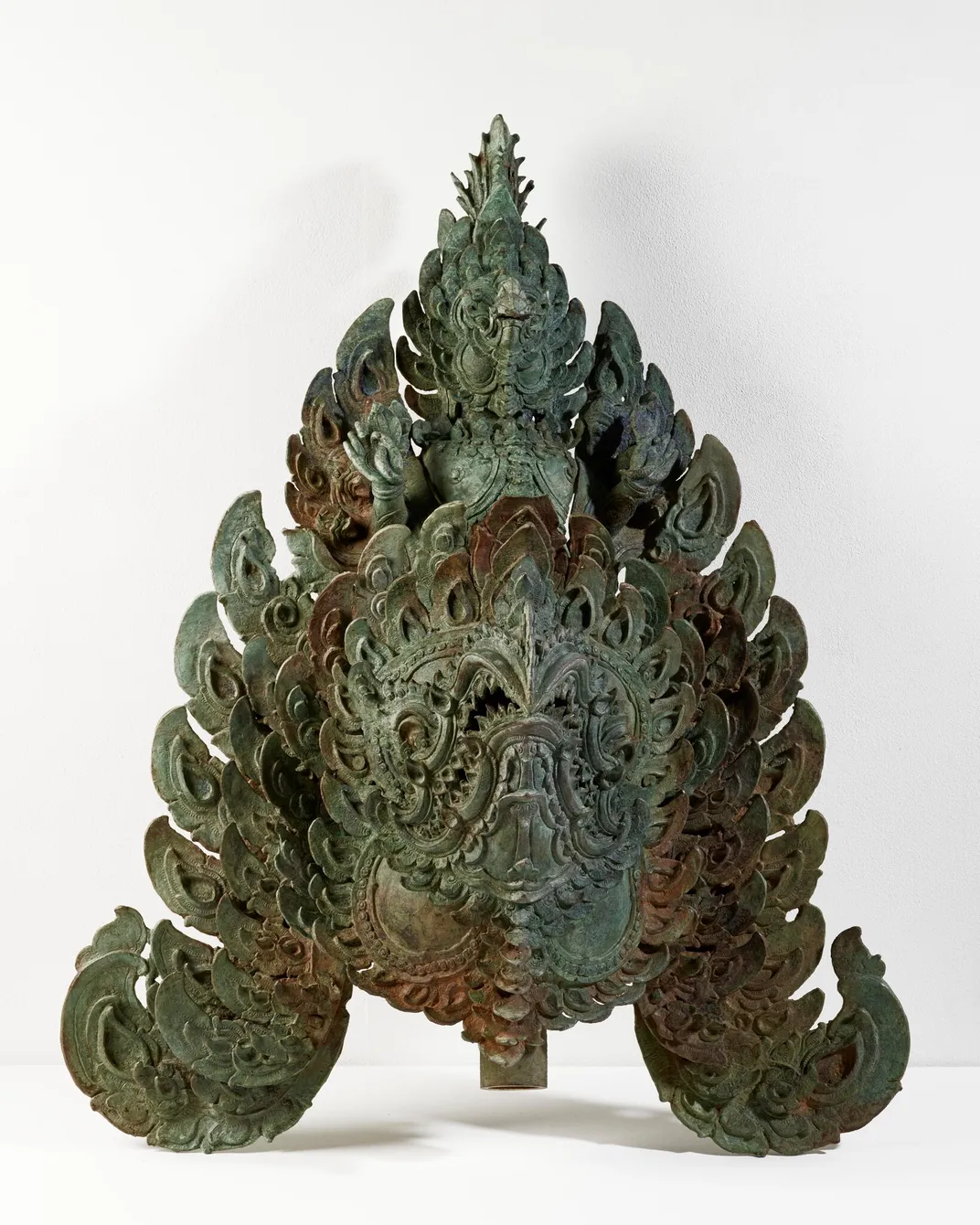Collection of Antiquities Dealer Accused of Looting Will Return to Cambodia
The $50 million trove represents one of the most significant repositories of Cambodian cultural heritage outside of the country
:focal(407x198:408x199)/https://tf-cmsv2-smithsonianmag-media.s3.amazonaws.com/filer/9c/9e/9c9e5072-ee0a-47d3-ba44-3372c5562173/my_post_3.jpg)
Nawapan Kriangsak, daughter of controversial antiquities dealer Douglas Latchford, is set to return her late father’s collection of Khmer Empire antiquities to Cambodia. The trove includes more than 100 rare objects dating back to the sixth century A.D.
Together, the artifacts, some of which hail from the royal cities of Koh Ker and Angkor, constitute the “greatest [collection] of Khmer cultural heritage outside of Cambodia,” said the country’s ministry of arts and culture in a statement last week.
But these antiquities also tell a fraught history. Once considered a preeminent dealer of Cambodian antiquities, Latchford, who died last August at age 88, had been accused in recent years of smuggling stolen Khmer antiquities. As Tom Mashberg explains for the New York Times, ongoing civil war, unrest and genocide under dictator Pol Pot made the country a prime target for the theft and resale of its many archaeological treasures. Looters routinely pillaged Cambodian archaeological sites between the mid-1960s and the 1990s.
In 1951, Latchford moved to Thailand, where he established an academic reputation as an expert on Cambodian art and co-wrote three books on Khmer antiquities with American scholar Emma Bunker. As Vincent Noce reported for the Art Newspaper at the time of his death, Latchford denied all claims of looting throughout his life.
/https://tf-cmsv2-smithsonianmag-media.s3.amazonaws.com/filer/88/9d/889d4211-dfe9-47f8-88de-7b6c44d8e684/merlin_182871528_b3775e28-d16c-4b9d-8013-15d476df1571-superjumbo.jpg)
“He liked to see himself as a rescuer of works of art which were long abandoned and might have been destroyed in Cambodia’s civil wars,” the Art Newspaper adds.
In November 2019, federal prosecutors in New York charged Latchford with trafficking in looted Cambodian artifacts, falsifying documents and related crimes. Per the complaint, Latchford “built a career out of the smuggling and illicit sale of priceless Cambodian antiquities, often straight from archaeological sites.”
At the time, Latchford was comatose and unable to respond to the claims. Prosecution efforts ended with his death the following year, according to the Times.
As Noce and Helen Stoilas reported for the Art Newspaper in early 2020, Latchford’s dubiously sourced artifacts found their way into major collections and institutions across the United States, including the Metropolitan Museum of Art in New York, the Denver Art Museum, the Cleveland Museum of Art and Sotheby’s auction house.
Many of these institutions decided to return objects to Cambodia after new information came to light: In 2013, the Met sent back two tenth-century stone statues that had been looted from Koh Ker, and in 2014, Sotheby’s returned a tenth-century statue of a Hindu warrior that authorities had previously accused Latchford of purchasing despite knowing it was looted.
“Latchford has been described as a one-man supply-and-demand for Cambodian art for the last half-century,” Tess Davis, executive director of the Antiquities Coalition, told the Art Newspaper last year. “If I were a museum curator, I would check every Cambodian piece acquired after 1965 just to be safe; that’s how prolific he was.”
When Latchford died, he left his private collection of works to his daughter, Kriangsak. She has already shipped 25 major works dating as far back as the tenth century from Bangkok to the Cambodian capital of Phnom Penh. In the coming months, more than 100 additional items will arrive in Phnom Penh by way of Latchford’s homes in London and Bangkok, per the Times. Upon their return, the artifacts will be displayed in the National Museum of Cambodia, according to the press release.

The Times reports that Kriangsak’s lawyers estimate the value of the collection at more than $50 million. Many of the priceless artifacts decorated Latchford’s Bangkok home.
Kriangsak had already begun talks regarding repatriating her father’s collection prior to his death.
“When I started this conversation three years ago, I could not anticipate how complex it would become,” she says in the statement. “I am delighted that this complete collection, gathered over many decades, will be returned to [its] ancestral home in the Kingdom of Cambodia.”
Cambodia’s minister of culture and fine arts, Phoeurng Sackona, tells the Phnom Penh Post’s Niem Chheng that she hopes the return of these artifacts will inspire other private collectors to repatriate their potentially looted holdings.
“Our message to private collectors, museums and all other nations is that our goal is to be able to tell the story of Cambodia,” she says. “They can take part in the history of Khmer culture by helping us to regain our lost artefacts.”
Among the returning artifacts are an ornamental bronze ship figurehead from the late 12th century; a stone statue of gods Shiva and Skanda in the style of Koh Ker; and a 10th-century statue of the half-male, half-female deity Ardhanarishvara.
“These are not just rocks and mud and metal,” Sackona says to the New York Times. “They are the very blood and sweat and earth of our very nation that was torn away. It is as if we lost someone to war and never thought they’d come home and we are suddenly seeing them turn up at our door.”
/https://tf-cmsv2-smithsonianmag-media.s3.amazonaws.com/accounts/headshot/nora.png)
/https://tf-cmsv2-smithsonianmag-media.s3.amazonaws.com/accounts/headshot/nora.png)